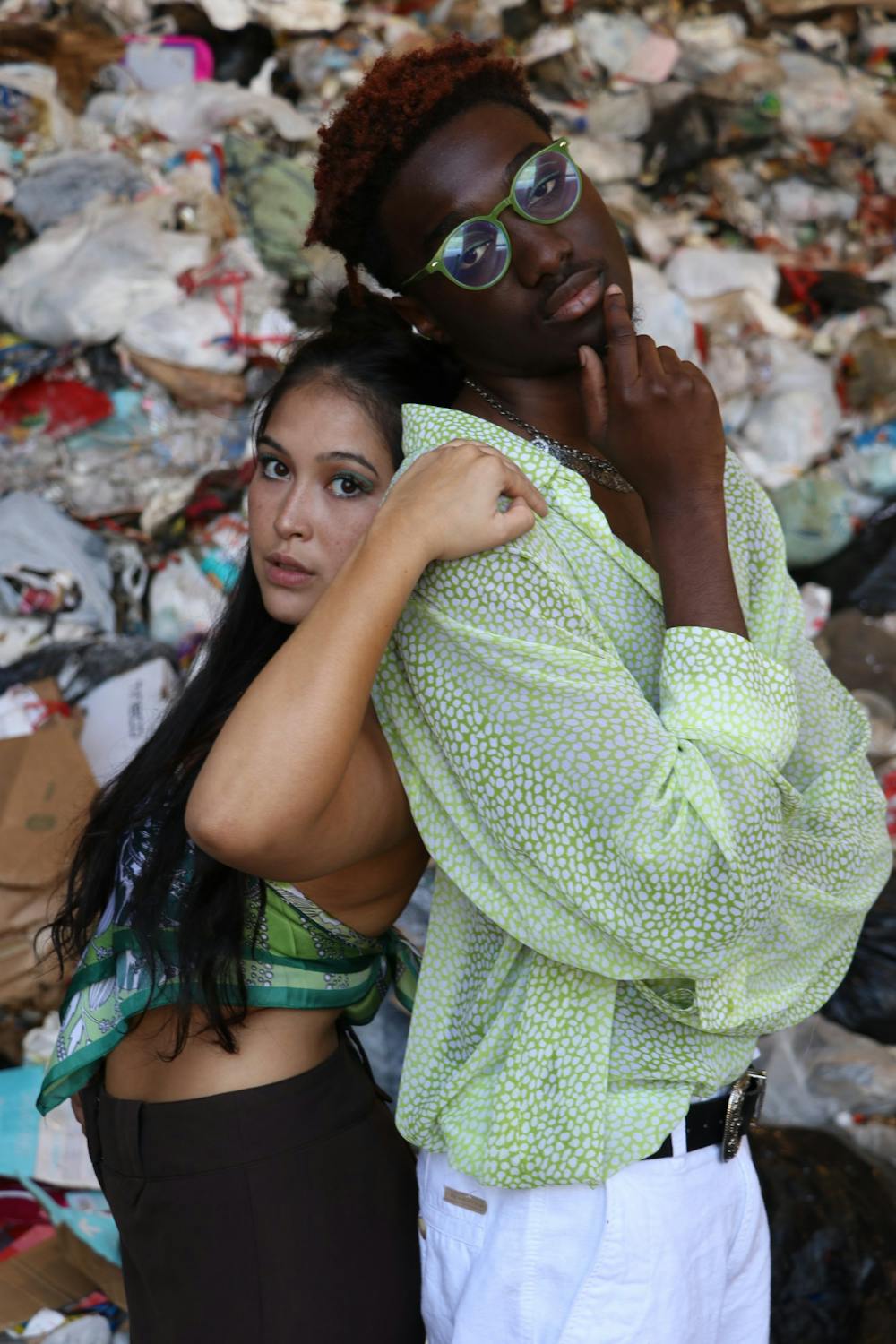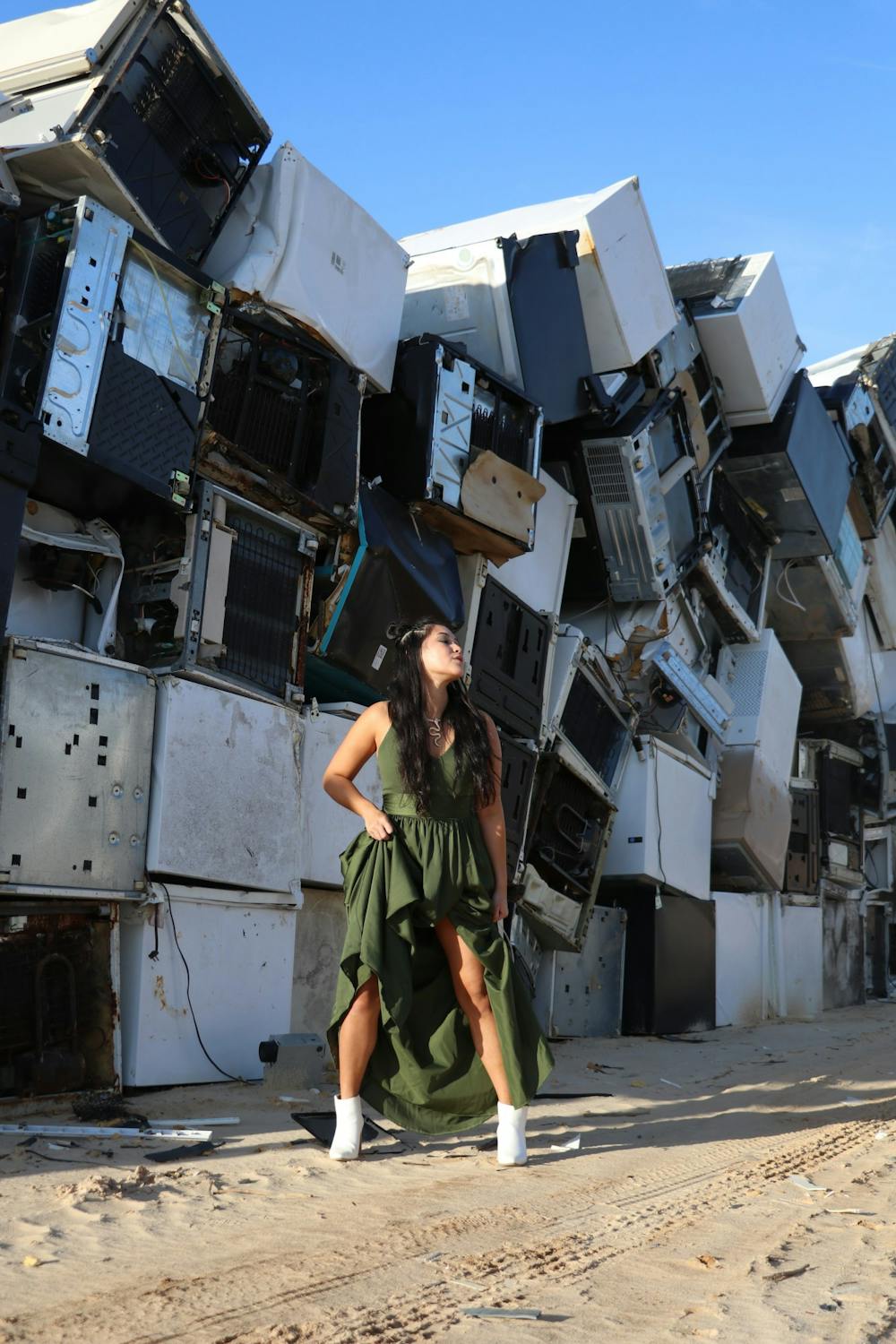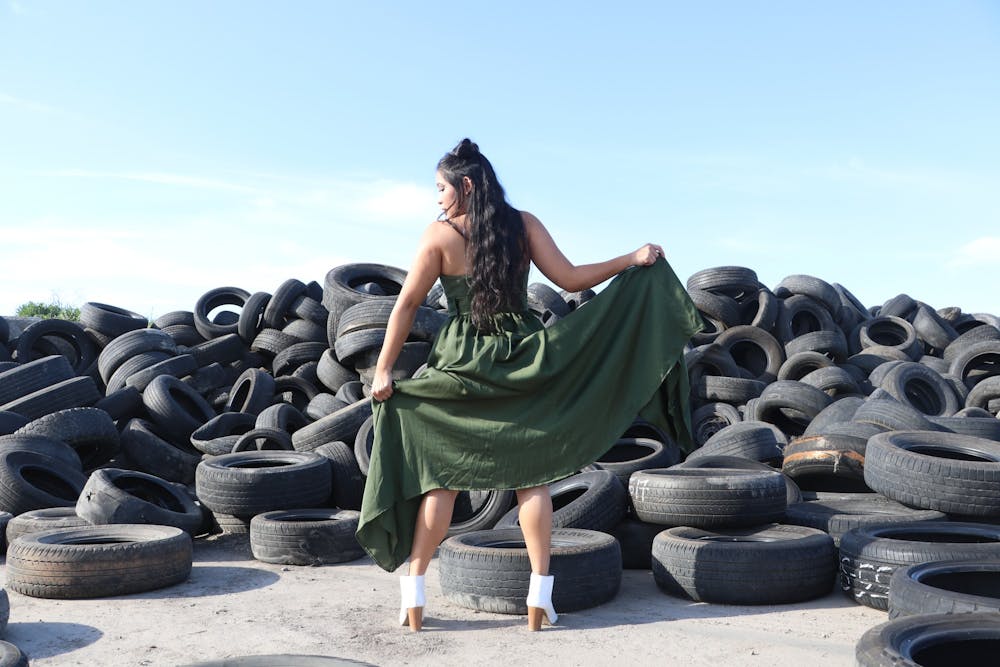“Welcome back to my channel. In today’s video, I am going to be showing you what I bought at Goodwill!”

In the last few years, introductions like these have plagued social media platforms encouraging a cycle of constant consumerization. At first, people posted the "$100 Shein hauls" but now it is all about the "$100 thrift hauls".
Some argue that thrifting is joining rank with fast fashion’s biggest culprit: Shein.
“Thrifting feeds off the instability and unsustainability of the fast fashion industry,” said Anna Fitzpatrick, a Ph.D. student and project coordinator at the London College of Fashion’s Center for Sustainable Fashion. “Without that, there wouldn’t be such a massive second-hand market.”
“I feel like thrifting does become popular for the wrong reasons sometimes,” Anna Chiang, an online reseller, said. “Sometimes people just buy cheap second-hand clothing as a hobby or because they see other people doing it.”
The rise of thrifting has shifted spending practices even more towards quantity over quality, which reinforces the fast fashion notion of overconsumption. This works against any minimalist ideologies that proponents of thrifting often praise.
“With a plethora of cheap options, customers get carried away and end up purchasing poor quality items that they may have a use for in the future. The issue with this is that it often never translates to utility,” Journalist Rabiah Kahol wrote in "Talk Dirty to Me."
Most items are donated back to the thrift stores after the season ends, once again diminishing the value of the piece.
“If you like to buy at a thrift store and then end up throwing them out sooner or later rather than re-thrifting them, that is when it can become problematic for our environment,” said Deborah Brosdahl, an Associate Professor at UofSC's College of Hospitality, Retail and Sports Management.

“It (thrifting) doesn’t challenge our addiction to shopping or the idea that we can have new clothes whenever we want them,” Fitzpatrick said. “It enables it.”
In fact, the very existence of thrift stores can give consumers a false sense of guiltlessness.
“We can swap out our entire wardrobe by dumping what we don’t want at a second-hand store with the hopes that it’ll be put to good use,” Fitzpatrick said. “Instead of buying less, we trick ourselves into thinking we can shop our way out of the problem by donating again and again.”
"Out of the bag of donations dropped off at a secondhand store, only 10 to 20 percent will be displayed under the fluorescent lights," journalist, Sara Watson wrote in Popular Science in 2021. The remaining 80 percent is shipped to countries like Poland, Pakistan and Kenya or turned into rags or post-consumer fiber.
Moreover, thrifting does not change the fact that some of the clothes in circulation still come from fast fashion brands that use unsustainable, resource-intensive and unethical methods of production.
But how did thrifting culture rise among Gen-Z?
Over the last 50 years, the clothing industry experienced an extreme makeover.
“People used to shop when they changed sizes, jobs and climates,” Watson wrote.
Since the 1980s, shopping has become less about necessity and more about following rapid trends. With the invention of social media in the 2000s, society has become a digital world where everyone’s style is constantly on display.
With the maximum lifespan of each garment being equal to one Instagram photo, society is adapting to this cultural shift by continuously shopping.
“I actually think that any item that is purchased should be worn more than once if you are truly concerned about the environment,” Brosdahl said. “This is one thing that anyone can do, and probably make more of an individual difference by doing so, than almost any other environmental sustainability action. You can’t buy an item, wear it once or twice and then, even if you send it to a thrift store, pretend it is helping the environment. We have to slow down our consumption of clothing in the U.S. We over-consume and we are among the worst. We import more clothing and footwear than any other single country in the world.”
To make continuous shopping a reality, fast fashion retailers release 12 to 15 collections each year. They produce their items in factories within Bangladesh, China and India where labor is cheap and there is a lack of ethical labor law enforcement.
The low-cost production benefits fast fashion companies by keeping consumer prices low, allowing consumers to buy more and more of the company's products, further perpetuating the fast fashion industry.
“The trouble with this [low prices] is that when you make clothes at rock-bottom prices, they become more or less worthless,” Watson wrote.
The most infamous fast fashion culprit, Shein, has led the fashion industry to take second place for the most polluting industry in the world.
According to Green American, 10% of humankind's carbon emissions come from the fashion industry.
Before a clothing company's collection reaches the racks, 35% of the material used to create those garments ends up as trash, according to a report by the fashion industry business network Common Objective.
If each fast fashion company releases a maximum of 15 collections a year, imagine how many millions of textiles are sent to the trash before reaching a store if 35% of the material is discarded.
But you may be asking, isn’t the future of fast fashion dying? Yes. The future of shopping is looking a little more vintage.
According to the 2021 ThredUp report, 40% of thrifters say they are replacing fast fashion purchases with second-hand clothing.
Resale is expected to be more than twice as large as fast fashion by 2030.
The shift from fast fashion to thrifting was not caused by one singular event. As more attention was brought to sweatshops and ethical wages, Gen Z environmental activists, like Mikaela Loach, took to the stage.
Utilizing social media, activists like Loach expressed a greater demand for sustainable and ethical products.
But this was not enough for Gen Z to quit shopping at their favorite malls. As activists protested, some Youtubers, like BestDressed, promoted thrifting by releasing $20 thrift hauls.
These social media influencers planted the idea that thrifting could be cool, which led Gen Z to turn their backs on malls and instead turn to Goodwill.
However, some people still remain divided on whether thrifting is saving or hurting the environment.
Some argue that thrifting is a solution to fast fashion pollution and may soon slay the fast fashion beast.
According to Second Ave Stores, one of thrifting's biggest environmental advantages is that it keeps clothes out of landfills. Discarded clothes sit in landfills for hundreds of years before the process of degradation even begins.
Because a lot of today’s clothes are made out of synthetic material that will not degrade, these clothes tossed into landfills take up a vast amount of space and contribute to the greenhouse gasses plaguing our planet.
Green America says that thrifting reduces the number of textiles sent to landfills by 10 million tons.
On another note, thrifting helps preserve water.
Think of it this way: If making one pair of jeans from scratch uses up to 10,000 liters of water, by purchasing thrifted jeans you are ideally preventing the manufacturing of another pair of jeans, hence saving 10,000 liters of water.
On the surface, these environmental statistics make thrifting seem like the ideal shopping option. However, the reality is that low prices promote a constant consumerization cycle, further linking secondhand shopping towards fast fashion practices.
Next time you hear, “Welcome back to my channel. In today’s video, I am going to be showing you what I got at Goodwill!” evaluate if the person’s use of thrifting helped or hurt the environment.



